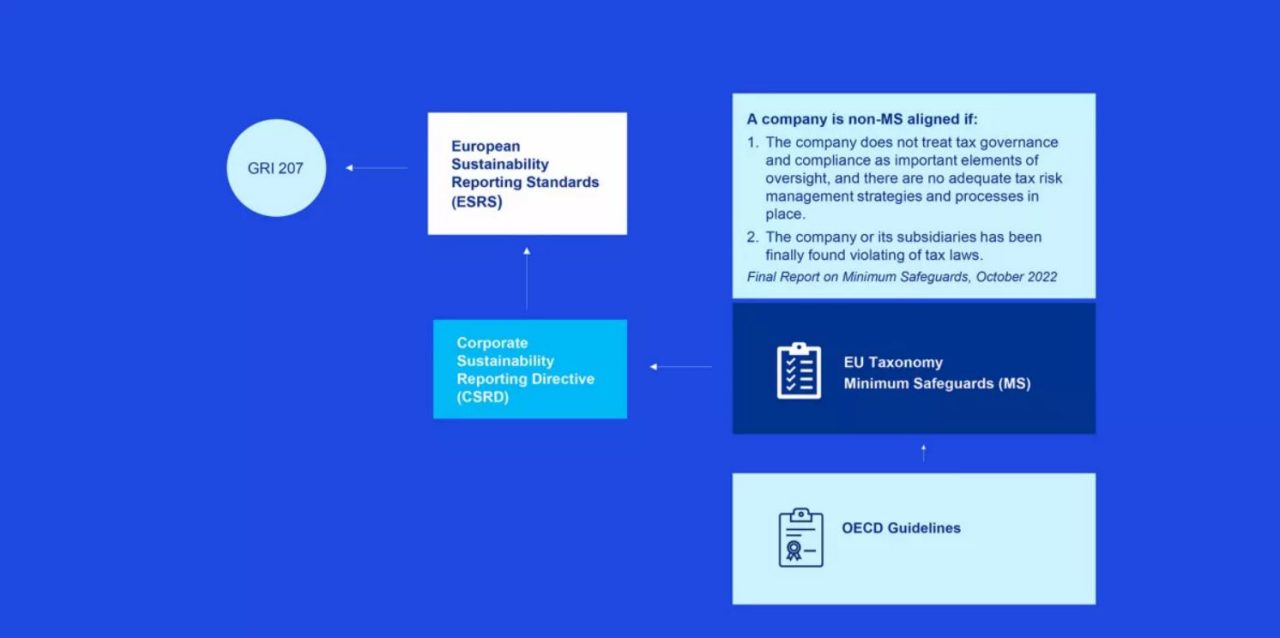Corporate Sustaiability Reporting Directive (CSRD)
The CSRD is part of the European Green Deal, which aims to transform the EU into a modern, resource-efficient, and competitive economy.The CSRD requires all large companies (including those that are not listed) and all listed companies (except listed micro-enterprises) to disclose information on what they see as the risks and opportunities arising from social and environmental issues, and on the impact of their activities on people and the environment. The new disclosure requirements also apply to third-country companies if they have a significant presence in the EU. Qualifying EU subsidiaries and branches of non-EU companies will be responsible for publishing the sustainability report of the third-country undertaking, following standards to be adopted by 30 June 2024 by the Commission through delegated acts.The CSRD is meant to build on and expand the current Non-Financial Reporting Directive (NFRD). The enhanced level of disclosure is considered to help stakeholders, such as investors, civil society, and consumers, evaluate the sustainability performance of companies. Disclosures will be required in a harmonized, machine-readable format, assisting stakeholders in comparing the performance of in-scope companies. The CSRD also mandates companies to have an audit of the sustainability information they report. The initial standard will be limited assurance, but there is an expectation that reasonable assurance (more stringent) will be required in the future. The first companies will have to apply the new rules for the first time in the 2024 financial year, for reports published in 2025. The intention of CSRD is to ensure that companies report reliable and comparable sustainability information necessary for stakeholders to evaluate companies’ non-financial performance, with the main goal of improving transparency for all stakeholders. For tax, this will likely represent a step beyond the quantitative data required under EU public CbCR and towards a focus on qualitative information.
Double Materiality on CSRD-data
The disclosures will be included in a dedicated section of the entity’s management report and will – for example - include information on:
- The entity’s business model, strategy, and policies in relation to sustainability.
- The role of the administrative, management, and supervisory bodies with regard to sustainability, as well as any incentive schemes linked to sustainability matters offered to members of those bodies.
- The main risks to the entity related to sustainability matters.
The Directive requires reporting both on the impacts of its activities on people and the environment, and on how sustainability matters affect the entity. That is referred to as the “double materiality” standard.
Double materiality
Double materiality means that a company must report on how its business is affected by sustainability issues (“outside in”) and how their activities impact society and the environment (“inside out”). Double materiality takes the concept of materiality in sustainability reporting one step further. To make a double materiality assessment a company must consider two perspectives:
1. What is material to them?
2. What is material to society or the planet?
A double materiality assessment can contain different steps, such as defining impacts, risks and financial opportunities and risks. Companies subject to the CSRD will have to report according to the European Sustainability Reporting Standards (ESRS), which cover all sustainability matters from a double materiality perspective. Disclosures are subject to the double materiality test with certain exceptions. Where a topical ESRS is not available for a specific topic, the ESRSs mention the possibility for entities to use the GRI Standards to report on material topics.
The connection with tax
Under CSRD, in addition to the ESG items that meet the double materiality standard and that will be reported based on the ESRS, companies are also required to report the percentage of their current revenues coming from activities aligned with the EU Taxonomy and the percentage of their future revenues (capital expenditure) coming from activities aligned with the EU Taxonomy. The EU Taxonomy is a common classification of economic activities significantly contributing to environmental objectives, developed by the EU.
Minimum Safeguards
The Minimum Safeguards are part of the EU Taxonomy Regulation and have been developed at the request of the European Parliament to ensure that entities that carry out environmentally sustainable activities also meet certain minimum governance standards and do not violate social norms, including human rights and labor rights. In other words, the Minimum Safeguards are meant to ensure that activities that are labeled as Taxonomy-aligned (i.e. sustainable) are not only “green” but meet a broader set of criteria around: human & workers’ rights, corrupt practices & bribery, taxation, and fair competition.
Regarding tax, the Minimum Safeguards require alignment with the OECD’s Guidelines for Multinational Enterprises. The OECD MNE Guidelines include a separate chapter on Taxation, which prescribe that companies should comply with the letter and the spirit of tax laws and regulations in which they operate. Therefore, companies should treat tax governance and tax compliance as important elements of their oversight and broader risk management systems. To get a clearer view of how the Minimum Safeguard connects the EU Taxonomy, CSRD and Tax, this illustration can help:


